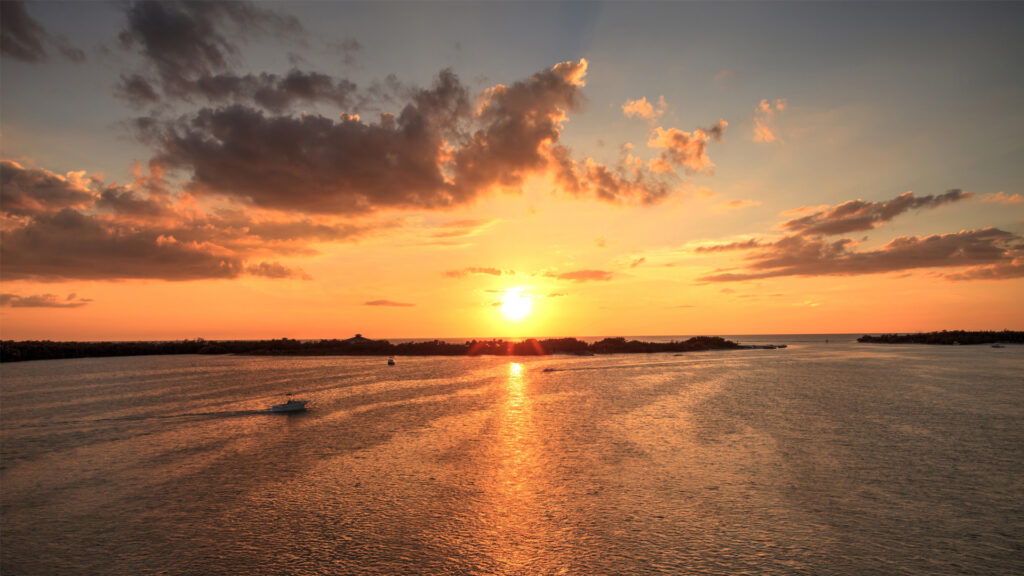By John Cassani, Calusa Waterkeeper emeritus
Florida’s coastal waters – composed of marshes and tidal estuaries, fed by iconic rivers – represent the very essence of natural Florida. It is hard to imagine any significant historical event going back to the 16th century that did not involve the state’s coastal waters.
Florida’s aquatic preserves – the first of which was Estero Bay, in 1966 – were intended to conserve and celebrate these vital waters and their watersheds from the coming onslaught of a booming state population and the development that would follow. There are now 43 state aquatic preserves, almost all of which are coastal.
Predictably, the mid-to-late 20th century brought a flood of tourists and new residents that put pressure on coastal waters, as most of the state’s population developed within a few miles of the coast. The Gulf American Land Corporation (GALC) that began the development of Cape Coral was a prominent example. In the late 1970s, GALC was court ordered to stop encroachment into coastal state waters and required to prevent further damage by treating the city’s polluted runoff before discharging to surrounding state waters.

Another example of restricting coastal development occurred around 1978. The development plan, known as The Estuaries, included a community of 73,000 people on 6300 acres of coastal habitat. The area was mostly mangroves abutting Estero Bay Aquatic Preserve in Lee County. The project was repeatedly denied by county and state agencies and, eventually, a decision by the Florida Supreme Court that limited the scope of the plan. The project eventually went bankrupt.
The writing was on the wall and the state wisely purchased significant tracts of land in the Estero Bay watershed. And in 1990, the Bay’s tributaries were designated as Outstanding Florida Waters (OFW). The OFW status was intended to prevent water quality decline since the time of designation.
Unfortunately, the state’s early posture on protecting coastal resources has shifted over the past 20-plus years. You will not see state or local governments in court fighting overdevelopment today – in fact, just the opposite. The resulting water quality decline, seagrass loss, algal blooms and economic impacts have been well documented.
Estero Bay and Matlacha Pass aquatic preserves, as just two examples, have been declared impaired for nutrient pollution and most of Estero Bay’s nine tributaries have suffered the same fate of impairment, making a mockery of the OFW non-degradation standard. The Indian River Lagoon, an east coast resource where its rich biodiversity was nationally acclaimed, has lost so much seagrass in recent years that manatees have starved.
In 2024 the state reported a total water area of 3,668,875 acres statewide for estuary segments identified as impaired for various pollutants. Impairment means these waters no longer meet their state designated uses, impacting recreation, public health and the economy.
So, what happened? It was death by a thousand cuts. The Florida Department of Community Development that regulated local land use planning was remade under Gov. Rick Scott as the Department of Economic Opportunity, giving local governments essentially a free hand on growth management. Florida Regional Planning Councils were rendered toothless and their planning programs aimed at developments of regional impact were eliminated.
In some cases, weakened land use rules allowed increased population density for building back after hurricanes devastated coastal communities and associated waters.

Pollution prevention plans – even some mandated by courts, as in Cape Coral and other areas discharging to estuaries – were abandoned or unmaintained favoring unsustainable development. Ongoing water restoration programs, enabled by state and federal clean water legislation, had compliance thresholds blurred by inaccurate or ineffective accounting of pollutant load reduction credits, often based on outdated land use modeling where urban growth was accelerating. Agriculture Best Management Practices remain as unverifiable checks on the biggest upstream pollution source impacting many coastal waters.
Stormwater treatment is required for nearly every urban development over five acres, intended to prevent impairment of downstream public waters. However, by 2010 there was broad recognition that the stormwater treatment practices were insufficient and a recent rule change – in 2023, for new development – is too little and too late.
What followed from policy makers was the continuing false narrative that record levels of public spending on restoration without effective regulation will reverse the decline of coastal waters. The outlook is grim as climate change magnifies the problem and the federal basis for water quality regulation by the states is again under assault.
The Florida Right To Clean Water, a proposal to amend the state constitution, may be the only hope for meaningful reform.
John Cassani, a Lee County resident, is Calusa Waterkeeper emeritus. This opinion piece was originally published by the Fort Myers News-Press, which is a media partner of The Invading Sea. Banner photo: Fort Myers Beach and the Estero Bay Aquatic Preserve in Southwest Florida (iStock image).
Sign up for The Invading Sea newsletter by visiting here. To support The Invading Sea, click here to make a donation. If you are interested in submitting an opinion piece to The Invading Sea, email Editor Nathan Crabbe at ncrabbe@fau.edu.



